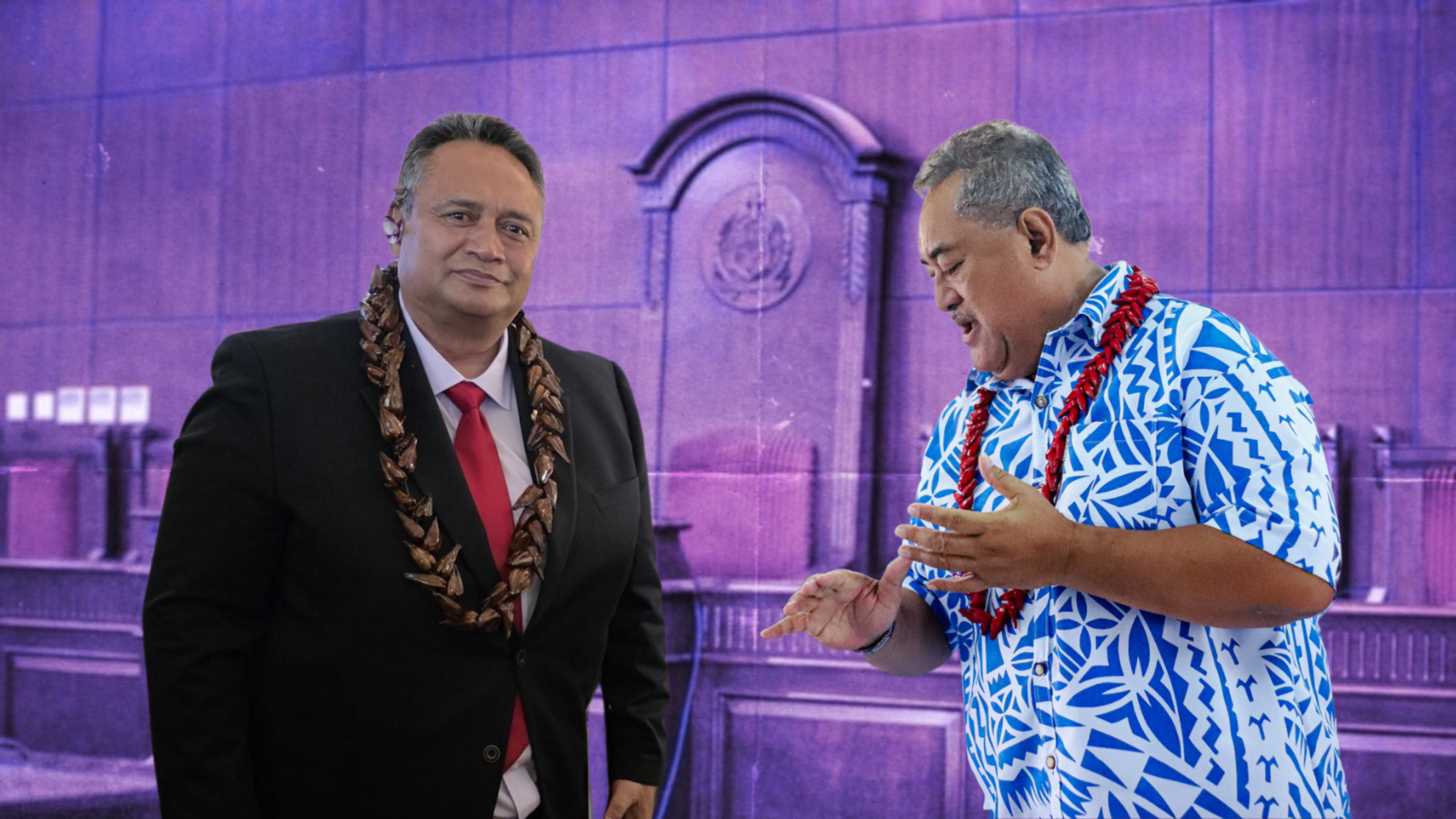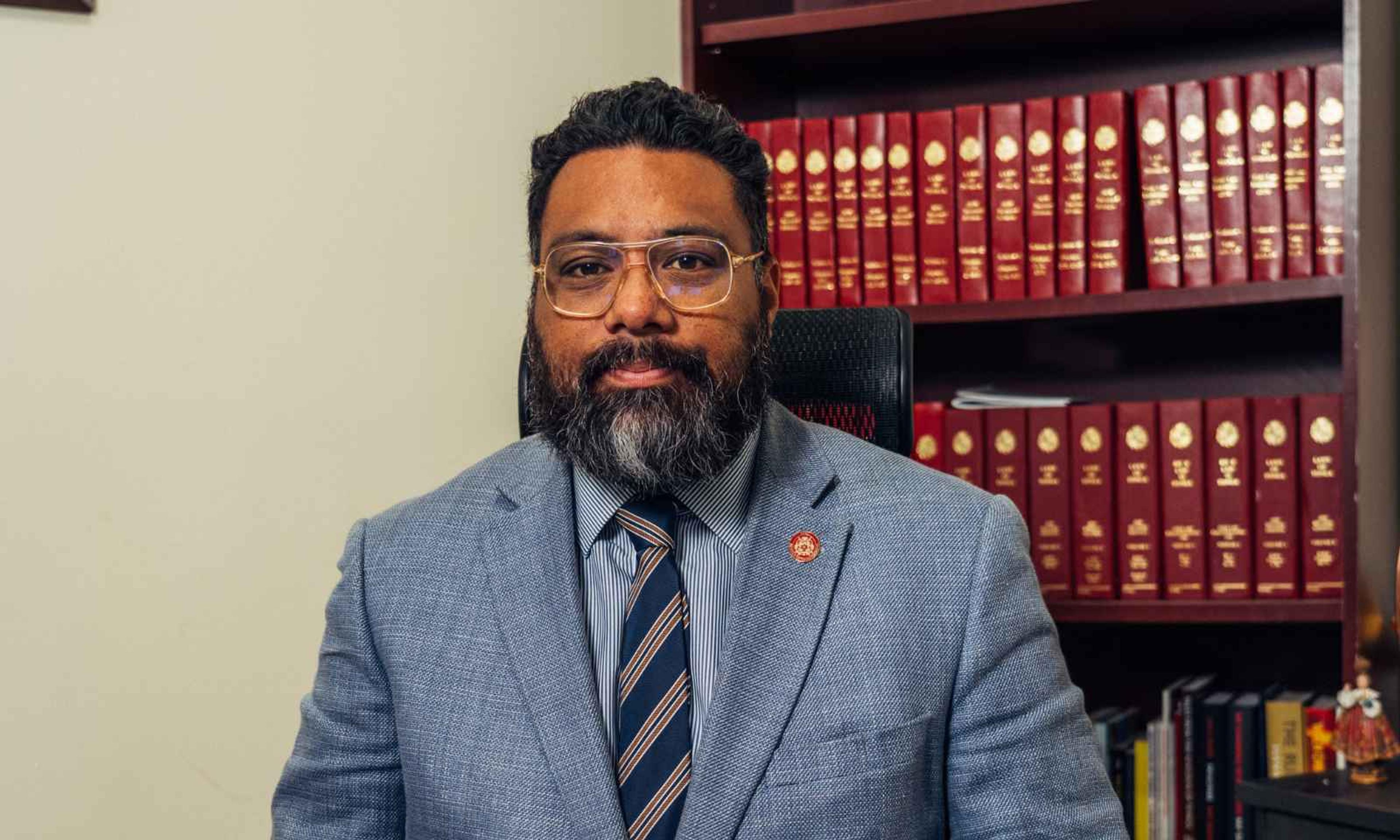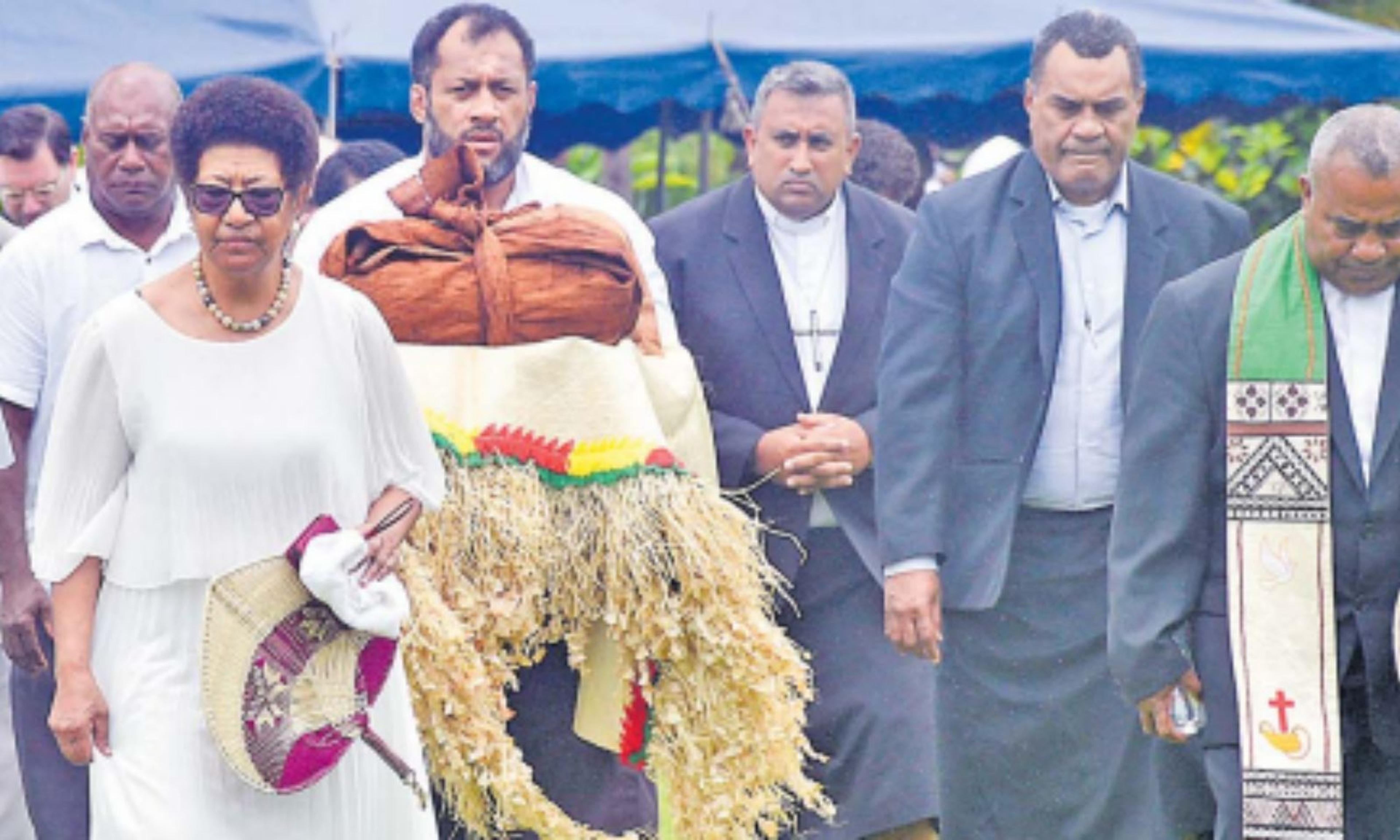
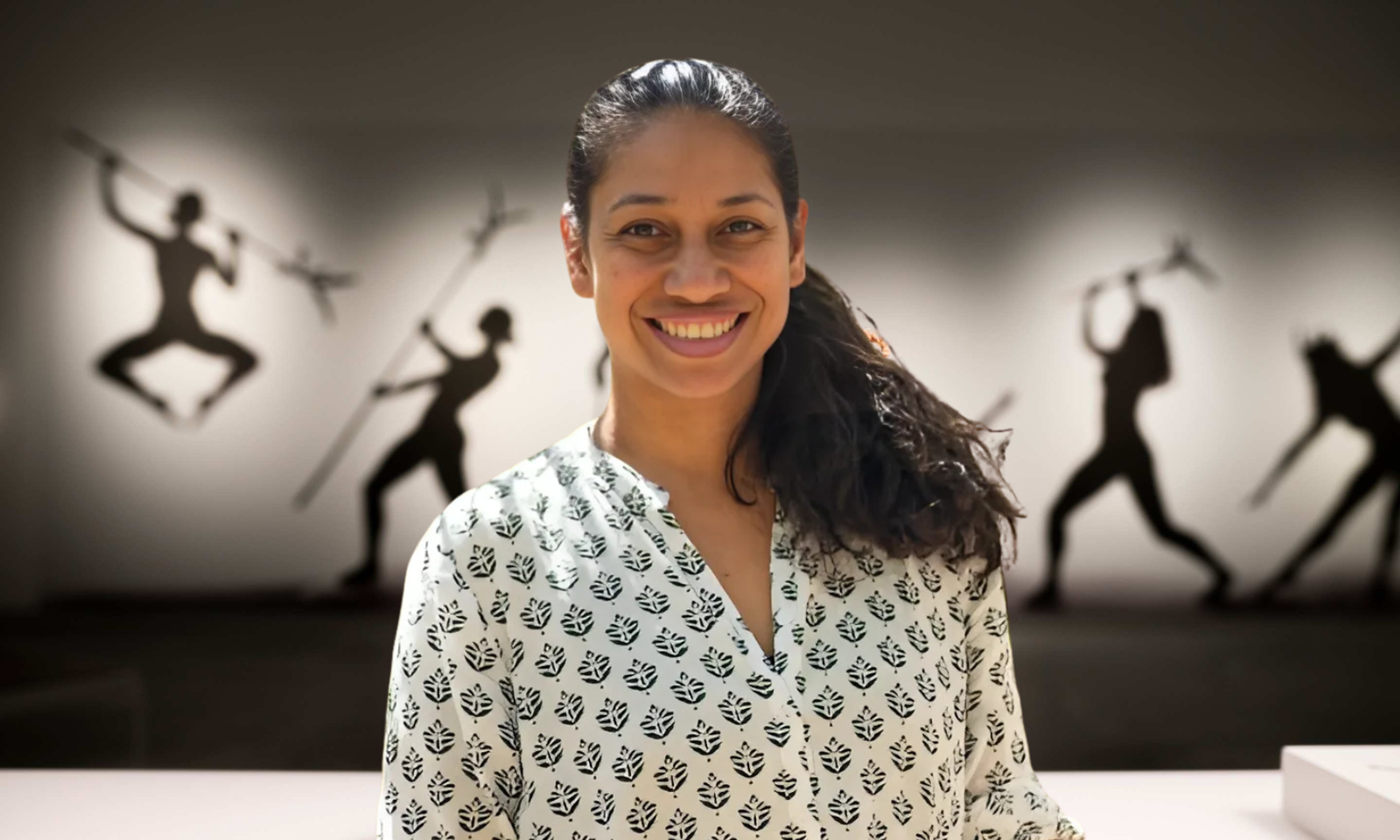
Professor Katerina Teaiwa's exhibition explores the displacement of Banaban residents from their homeland.
Photo/Composite
Academic challenges colonial legacy with new Banaban dance
Professor Katerina Teaiwa honours her people’s history using movement and memory to inspire a new generation of Pacific storytellers.


A Pacific academic is using a rare art form to highlight the displacement of her people and colonisation in the region.
Professor Katerina Teaiwa, who is of Banaban, i-Kiribati, and African-American heritage, uses dance as a tool to celebrate culture, preserve history, and make a political statement.
In an interview with Tofiga Fepulea’i on Island Time, Teaiwa says: “Anyone who studies the Pacific knows that lots of different forms of knowledge are visual, are embodied, are in songs and dances and chants.”
Banaba is a small atoll near the equator that became part of Kiribati in 1979. Starting in the early 1900s, the British Phosphate Commissioners, a partnership between the United Kingdom, Australia, and New Zealand, extracted 22 million tonnes of phosphate from Banaba, a key ingredient in fertiliser. In 1945, the Banaban population was forcibly relocated to Rabi Island in Fiji.
In response to their displacement, the Banabans revitalised traditional songs and dances as expressions of identity and protest. One notable dance is called Te Karanga. In the 1970s, when they sued the British government and the phosphate company for the destruction of their homeland, these spear dancers led protest marches alongside the legal proceedings.
In her latest exhibition, Dance Protest, Project Banaba, Teaiwa draws on archival footage of Banaban dancers to highlight the loss of ancestral land for short-term economic gain.
“Banabans were doing politically informed dancing and telling their stories in order to raise their voices and seek justice,” she says.
“Banabans utilised their own revitalised form of dance and dance theatre in order to protest what was happening to them in terms of phosphate mining and losing their rights under the British colonial period.”
For Teaiwa, the loss is deeply personal. The exhibition features her daughter as a central figure, symbolising the multi-generational disconnection from their homeland.
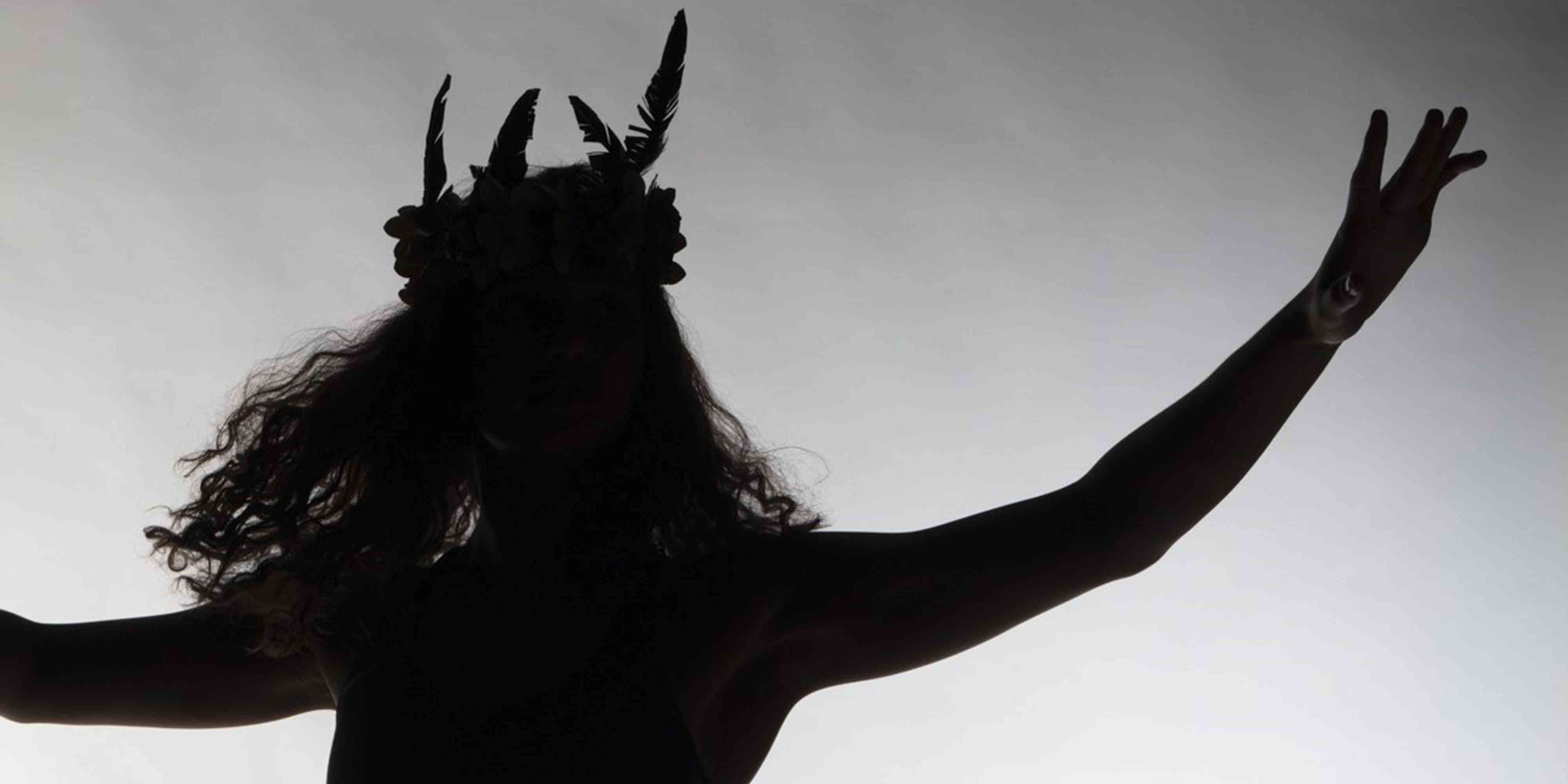
The exhibition uses dance, along with musuem collection pieces to tell the story of Banaba displacement. Photo/University of Sydney
“She’s double displaced, from Banaba to Fiji and now to Australia,” Teaiwa says. “And she's the central figure in this dance protest.”
In a statement, Michael Dagostino, Director of Museums and Cultural Engagement at the University of Sydney, says the exhibition uses museum collections to raise awareness of unknown histories and perspectives from the Pacific.
“The result is a big story about a tiny island measuring six square kilometres, whose land fuelled the colonial prosperity of the British Empire in the 20th century, a common story across the Pacific.”
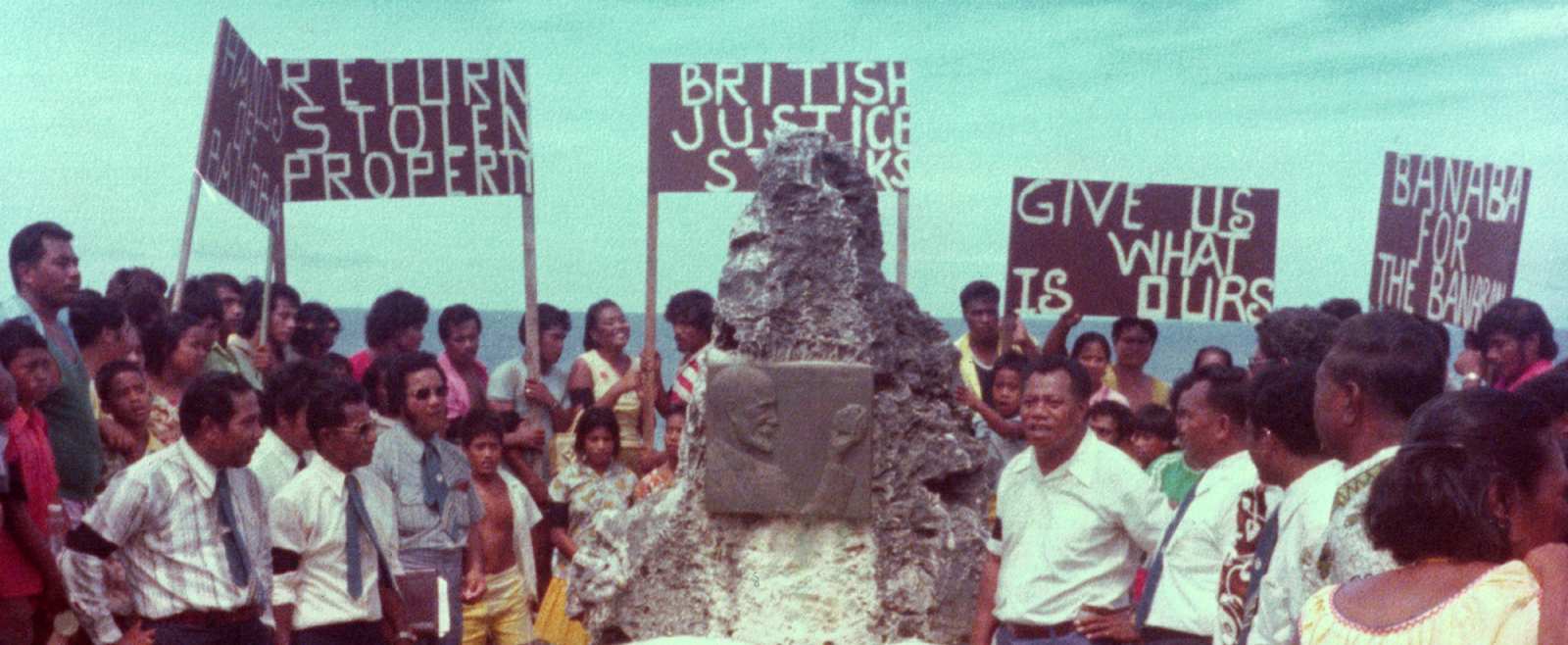
Banabans protesting phosphate mining on Banaba (Ocean Island), and seeking political sovereignty and independence from Great Britain and the Colony of the Gilbert Islands, 1979. Photo: Catherine Alexander via Sydney University.
A lifetime pursuit of justice
Teaiwa is a Professor of Pacific Studies at the Australian National University and a former president of the Australian Association for Pacific Studies. She is also the current editor of The Contemporary Pacific journal and a staunch advocate for ethical research and Indigenous-led scholarship.
While much of her advocacy happens through scholarship and her work with the Banaban Human Rights Defenders Network, Teaiwa says teaching offers hope.
“I want [students] not just to think about the Pacific differently or in a more nuanced and critical and creative way, but to think about the whole world in a different way using what they learned in Pacific studies … thinking about the ways in which they’re trying to reconnect to who they are, where they come from, and tell their stories in their own ways.”
She says preserving Pacific stories is crucial, and that this effort requires collective responsibility.
“Banaban land is still valuable, whether it’s through more phosphate mining or other kinds of economic or geopolitical interests… knowledge is power, but you need to know what this knowledge is being used for and how.
“We don't do this alone. We work collaboratively, and we work with the community, and everything we do is a reflection of those relationships.”
Dance Protest, Project Banaba is currently on display at the University of Sydney’s Chau Chak Wing Museum in the Penelope Gallery, running until 25 January 2026.
Watch Professor Katerina Teaiwa's full interview below.
